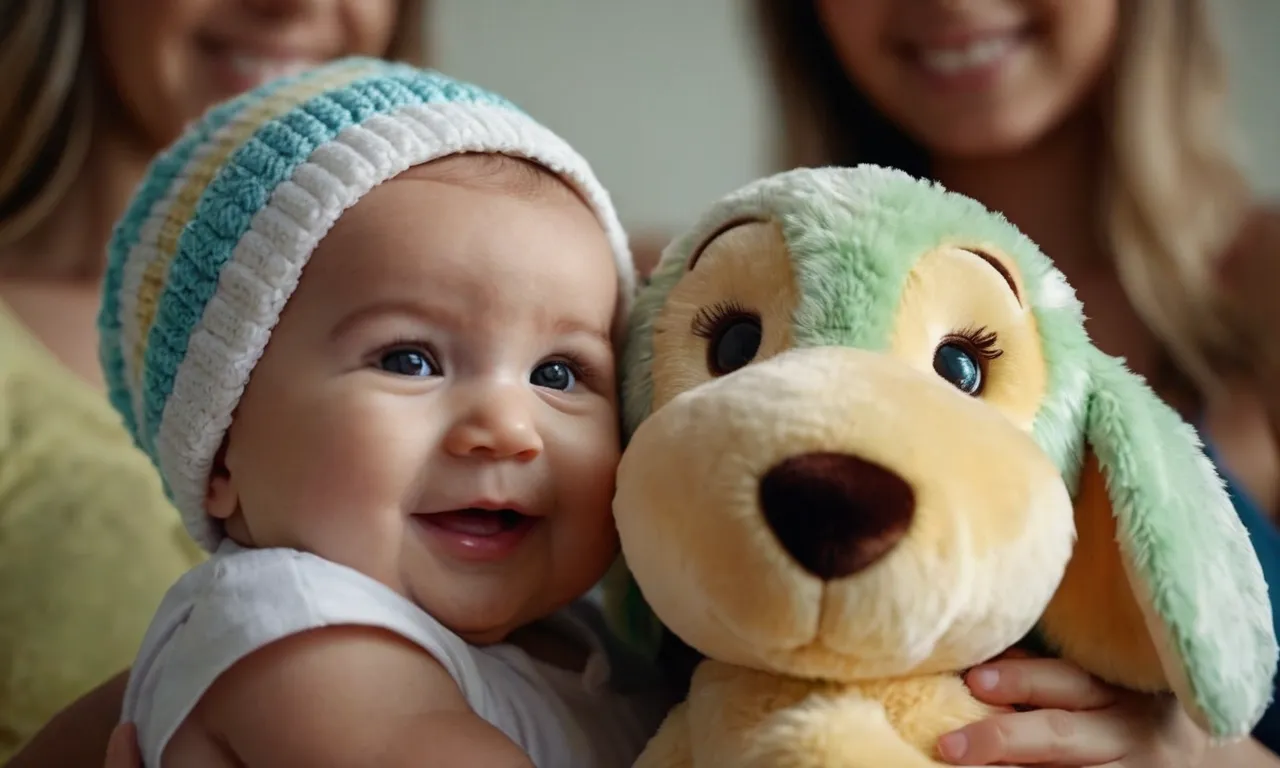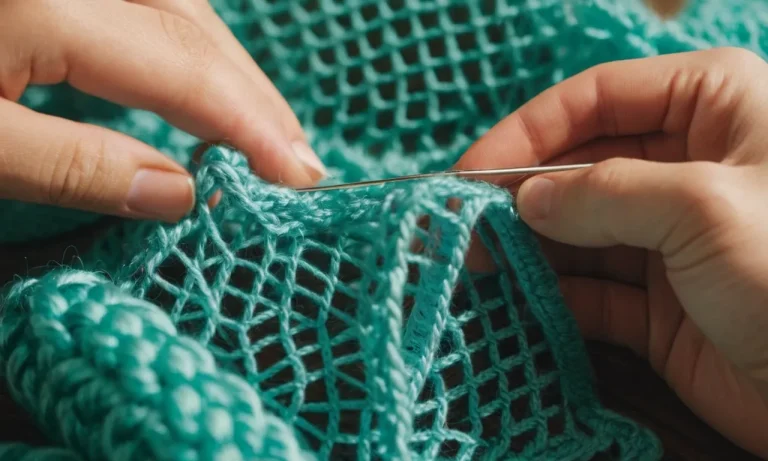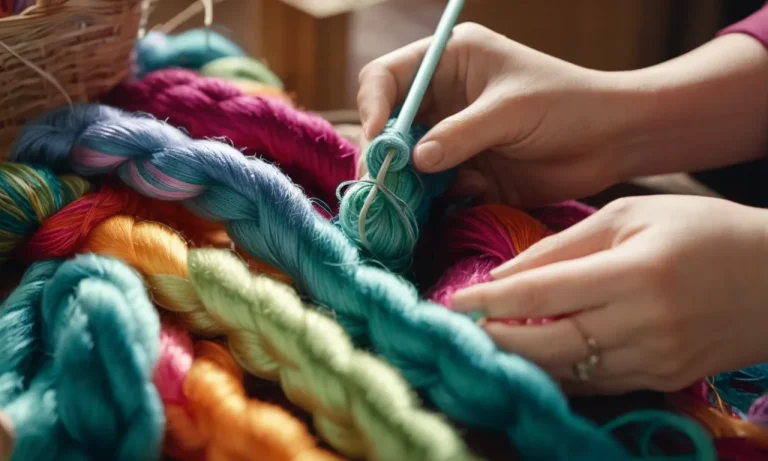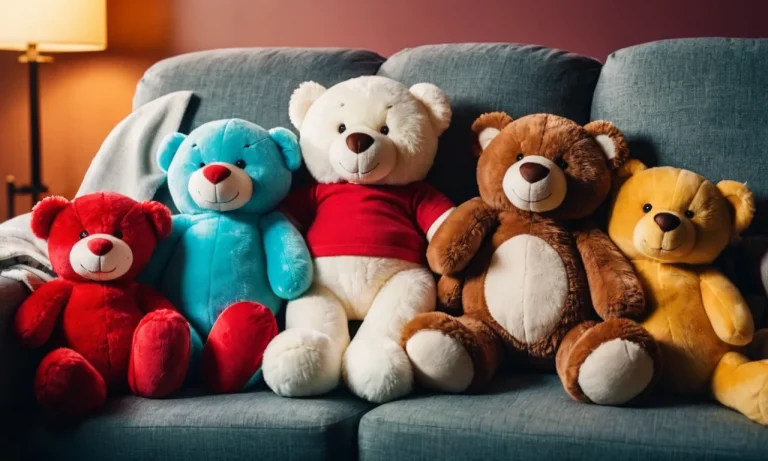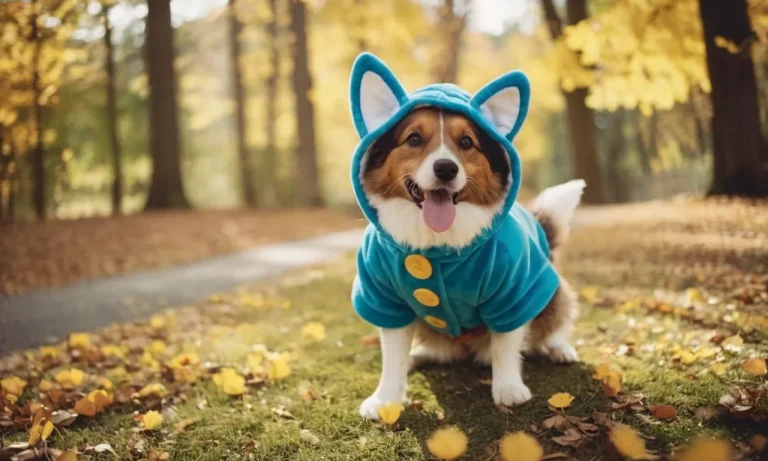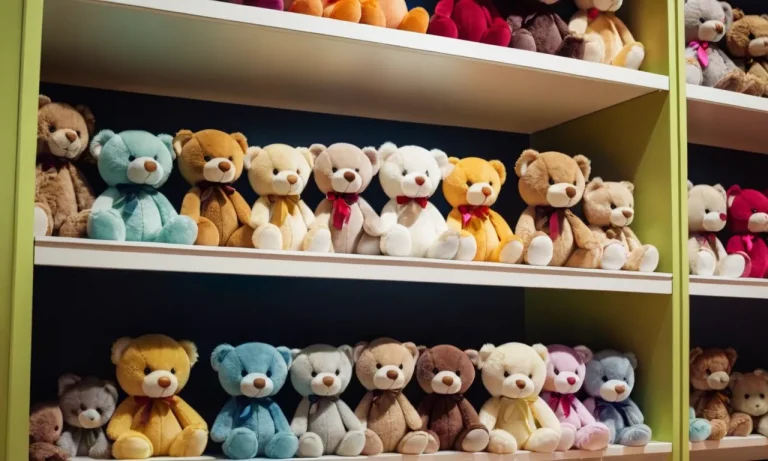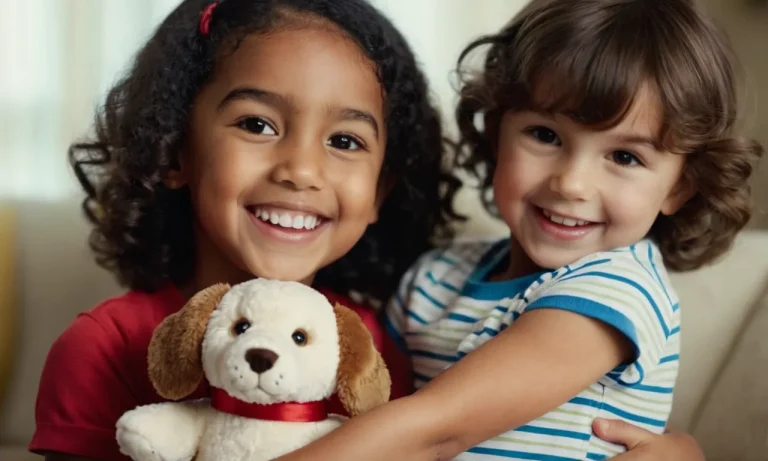As a new parent, discovering your baby’s emerging likes and dislikes is an exciting part of the journey. Stuffed animals often become beloved toys and comfort items, but when do infants actually start enjoying them?
If you’re short on time, here’s the quick answer: Most babies begin showing interest in stuffed animals around 3-6 months old, reaching to touch them and exploring their textures. Closer to a baby’s first birthday is when stronger attachments often form and stuffed animals may turn into self-soothing “lovey” toys.
Reasons Babies Like Stuffed Animals & Their Benefits
Sensory Development & Exploration
Stuffed animals provide great sensory stimulation for babies who are rapidly developing their senses in the first year. The soft textures give their hands something interesting yet safe to touch and grip. The colors, patterns, and shapes also give their developing eyes and brains plenty to take in.
According to the American Academy of Pediatrics, activities that engage the senses are key learning opportunities at this stage.
As babies gain mobility, they also like to drag stuffed animals around and explore different ways to play with them. Simple activities like dropping a stuffed toy and picking it back up help infants understand cause and effect and object permanence.
They also love putting stuffed animals in their mouths, which lets them explore shapes and textures orally.
Self-Soothing Comfort Item
The soft, cozy, and cuddly qualities of stuffed animals make them ideal emotional comfort items for babies. According to ZERO TO THREE, having a special soothing object provides a sense of security for infants when they feel distressed, tired, or overwhelmed.
The familiar, pleasant sensations of a cherished stuffed friend can relax babies and help them self-regulate their emotions.
As this strong comfort object association develops in the first year, babies start to show attachment to particular stuffed animals. They may cling to them at bedtime or toddle around carrying a favorite lovey everywhere. This attachment behavior is a healthy part of their social-emotional growth.
Early Pretend Play
Towards the end of the first year, babies begin participating in simple pretend play scenarios with stuffed animals and parents. They may mimic actions like feeding a stuffed bear with a bottle or tucking stuffed kitties into toy beds.
This stage lays important foundations for cognitive, social, and language skills.
As they start understanding language more, babies also increasingly interact with stuffed animals as imaginary friends. They may assign names or personalities while babbling away. This helps them to practice early communication concepts.
So while they might seem like simple toys, stuffed animals deliver major developmental benefits for babies. Their endless appeal stems not just from being cuddly companions but nurturing a young child’s growth in myriad important ways.
When Do Babies Start Noticing & Grabbing at Stuffed Toys
Newborn Stage (0-3 Months)
In the first few months of life, newborn babies do not intentionally reach out and grab stuffed toys. However, they may unintentionally brush against or swat small, soft toys within their reach. At this stage, babies have poor eyesight and difficulty controlling their arm and hand movements (their motor skills are still developing).
While newborns cannot truly play with stuffed animals, some may find comfort in the soft, plush fabrics against their skin. The textures and colors of stuffed toys can also help to stimulate their senses during this early developmental period.
3-6 Month Old Babies
Around 3 months of age, babies gain control over their arm and hand movements and can start purposefully swiping, touching, and grasping nearby stuffed toys. They are fascinated by different textures and will run their hands over the soft furs and fuzzy fabrics.
Babies this age also begin establishing color vision. They are often captivated by stuffed animals with contrasting patchwork patterns or bright, vibrant colors. Simple facial features like noses, mouths, and eyes may also capture their interest.
While 3-6 month old babies cannot truly play with or cuddle plush toys yet, they gain valuable sensory input and practice motor coordination skills through early stuffed animal interactions.
6-12 Month Old Babies
Between 6-12 months, babies progress to more advanced interaction with stuffed toys. Their gross motor and fine motor skills improve significantly during this time.
Around 6 months, babies begin actively reaching for, grasping, and manipulating stuffed animals. They may shake them, chew on them, or simply clutch them in their hands or against their bodies. Between 9-12 months, babies also start incorporating plush toys into pretend play like feeding dolls or tucking stuffed animals into toy beds.
In the second half of the first year, babies form emotional attachments to favored soft toys chosen for comfort or sleep. These special “lovies” travel with them everywhere! 🧸😊
- 0-3 months: limited stuffed animal interaction
- 3-6 months: start noticing, swiping at plushes
- 6-12 months: grabbing, manipulating, beceoming attached to stuffed favorites
Tips for Choosing Safe Stuffed Animals
Ensure Soft, Lightweight, & Washable
When selecting stuffed animals for babies and toddlers, it’s important to choose soft, lightweight options that are easy to clean. Babies will likely chew, drool, and spill on their plush pals, so washability is a key factor.
Look for stuffed animals made of cotton, fleece, or other machine-washable fabrics. Check that embroidery and accessories like bows, buttons, or plastic eyes are securely fastened so they won’t become choking hazards if pulled off.
The softer and lighter the stuffed toy, the safer it will be for cuddling and playing.
Check for Detachable Parts & Loose Threads
Carefully inspect any stuffed animal before allowing baby access to it. Make sure there are no small detachable parts like eyes or noses that could separate and become choking risks. Check for loose strings or threads, which should be neatly trimmed short to prevent tangling.
Avoid toys with long hair or yarn that babies might get wrapped up in. Regularly check older stuffed animals for wear and tear issues like ripped seams or stuffing holes where small parts could come loose.
Organic When Possible
When available, choose stuffed animals made from organic, chemical-free fabrics and hypoallergenic stuffing to limit baby’s exposure to harsh dyes, pesticides, allergens, and other irritants they might chew or drool on.
Organic materials are better for baby’s developing immune system and the environment too! While they’re often more expensive than conventional stuffed toys, investing in a few non-toxic, high quality, organic cuddle buddies will pay off in peace of mind.
| Safety Feature | Benefit for Baby |
|---|---|
| Soft, lightweight fabric | Safe for cuddling and chewing |
| Machine-washable | Easy to keep clean and hygienic |
| Securely attached parts | Prevents choking hazards |
| Trimmed, tight threads | Reduces tangling risks |
| Organic materials when possible | Limits exposure to chemicals |
Following these toy safety guidelines will ensure your baby has access only to stuffed pals that nurture their development instead of putting their health at risk. Check stuffed animals regularly for wear and tear, wash frequently, and replace any toys that become damaged.
With some care and caution, fluffy stuffed friends can be treasured loveys for years to come! 🧸
For more toy safety tips, check out the U.S. Consumer Product Safety Commission’s toy safety guidelines.
Conclusion
In the first year of rapid growth and discovery, stuffed animals can provide babies comfort, sensory stimulation, and even early pretend play opportunities. Paying attention to when your baby starts showing interest can help you choose suitable plush toys to nurture development.
With so many options, focus on safe materials to make sure their new favorite snuggly friend will last.

